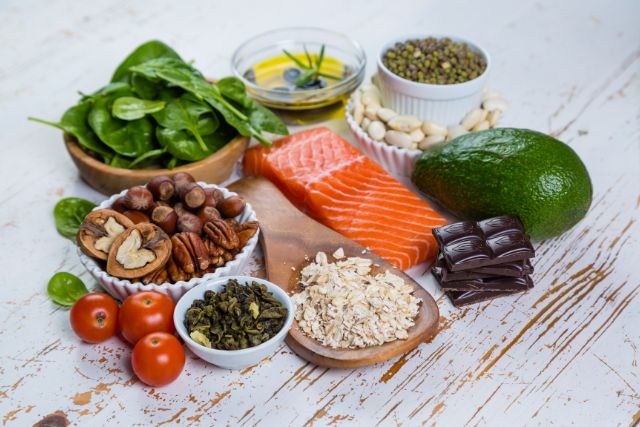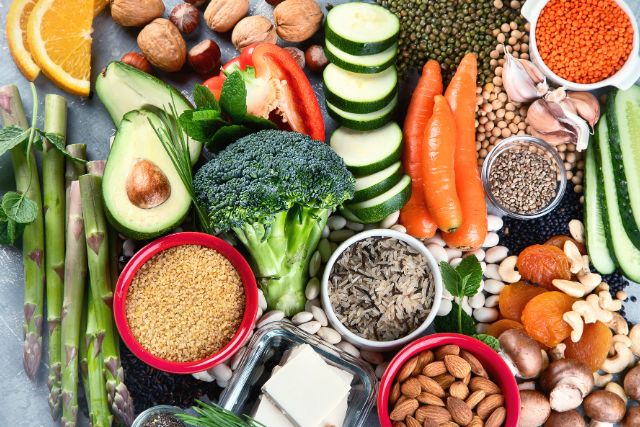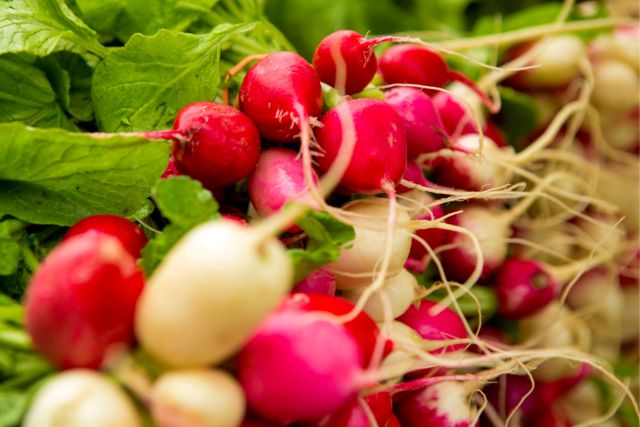Recent Posts
-

- Diabetes-Friendly Nutrition: Smart... 08.12.2024
-

- Nutrition for Chronic... 08.12.2024
-

- Anti-Inflammatory Diet: Food... 08.12.2024
-

- Low-Sodium and Heart-Healthy:... 08.12.2024
-

- Plant-Based Diets for... 08.12.2024
Rooted in Nature: Cultivating Organic Radishes for Flavor and Nutrition

With their crisp texture and spicy taste, radishes are a great addition to any organic garden. Radishes are a member of the cabbage family. Not only are these unassuming root vegetables simple to cultivate, but they are also loaded with vital nutrients. In this book, we will investigate the art of producing organic radishes, beginning with the seed and ending with the harvest, and we will study the many health advantages these radishes give.
Radishes are a root vegetable member of the Brassicaceae family. This family also contains mustard, cabbage, and broccoli among plants. The crisp texture, peppery taste, and brilliant colors that they often exhibit are the common characteristics that define them. Radishes are available in various forms, sizes, and colors, ranging from daikon radishes, which are elongated and white, to tiny, spherical red variants.
Because they have a more refreshing flavor and a more crisp texture, these vegetables are often served raw in salads or as a garnish. Nevertheless, they may also be prepared in various ways, including roasting, sautéing, or pickling, among other methods.
Radishes are an excellent source of nutrients, including fiber, potassium, and vitamin C. Additionally, they are low in calories, making them a nutritious supplement to a well-balanced diet. Additionally, radishes include chemicals such as glucosinolates, linked to possible health advantages such as antioxidant and anti-inflammatory qualities. Radishes are a great source of nutrition.
Radishes, in general, are a versatile and tasty vegetable that can be used to embellish a broad variety of recipes while also contributing to their nutritional value.
How to Select the Appropriate Varieties
Radishes grown organically are available in a wide range of forms, sizes, and colors, and each variety has its distinctive taste. Round red radishes, elongated daikon radishes, and petite French breakfast radishes are some of the most common forms of radishes. When picking radish types for your organic garden, it is important to consider several aspects, including the kind of soil, the climate, and the intended purpose of the radish. For example, spherical radishes are perfect for salads and snacking, while daikon radishes are fantastic for pickling and stir-frying.
How to Get the Soil Ready
Organic radishes grow best on loose, well-drained soil and with significant organic matter. The first step in preparing the planting area is to get rid of any weeds that may be present and to loosen the soil to a depth of at least six inches. Compost or aged manure should be incorporated into the soil to promote fertility and provide the necessary nutrients to develop radishes.
Replanting Seeds
Radishes are cool-season crops, meaning they must be grown at lower temperatures for germination and growth. Radishes may be planted in the early spring or late summer for a harvest in the autumn in regions that are considered to be moderate. Sow the seeds of the radish straight into the soil that has been prepared, positioning them about one inch apart in rows that are six to eight inches apart. Covering the seeds with a thin layer of dirt and gently watering the area, you can guarantee that the seeds have a good touch with the soil.
Care and upkeep of the space
Radishes grown organically need little maintenance, although they benefit from a steady moisture supply throughout the growth season. To avoid the radishes from becoming woody or too spicy, it is important to maintain an equal moisture level in the soil, particularly during dry months. It is possible to prevent the development of weeds and assist the soil retain moisture by mulching the area surrounding the radish plants.
Harvesting and Storage
It takes around three to four weeks for radishes to be ready for harvest, although this time frame might vary depending on the variety and the growth circumstances. Harvest them after the radishes have reached the required size, typically between one and two inches in diameter for round kinds and between six and eight inches for daikon radishes. It is important to avoid damaging the tops of the radishes when you carefully remove the dirt around the roots of the radishes and then lift them out of the ground.
The organic radishes that have been collected may be kept in the refrigerator for a period that can last for many weeks. The shelf life of the plants may be extended by removing any extra soil and trimming the tops. Radishes may also be pickled or fermented for longer-term preservation, and they can be used in salads, sandwiches, and other foods for a crunch that is both tasty and crunchy.
The advantages of one's diet
Radishes grown organically are not only tasty but also healthy, and they provide a variety of well-being advantages. Because they contain a low number of calories and a high amount of fiber, they are ideal for maintaining digestive health and managing weight. Radishes are also an excellent source of vitamins C and K, as well as antioxidants such as anthocyanins and flavonoids, which protect the body from the damaging effects of oxidative stress and inflammation.
To summarize, growing organic radishes is a satisfying endeavor that enables you to enjoy the taste of fresh and tasty vegetables obtained directly from the garden. It is possible to harvest an abundant crop of radishes that are not only tasty but also nutritious, giving a healthy boost to your meals and snacks. All you need to do is take the necessary care and attention into consideration.
Disclaimer: The information provided in this article is for general information purposes only. All information in this article is sourced from other websites, and we do not represent any rights regarding the contents and information on the site. All rights belong to their original owner.





